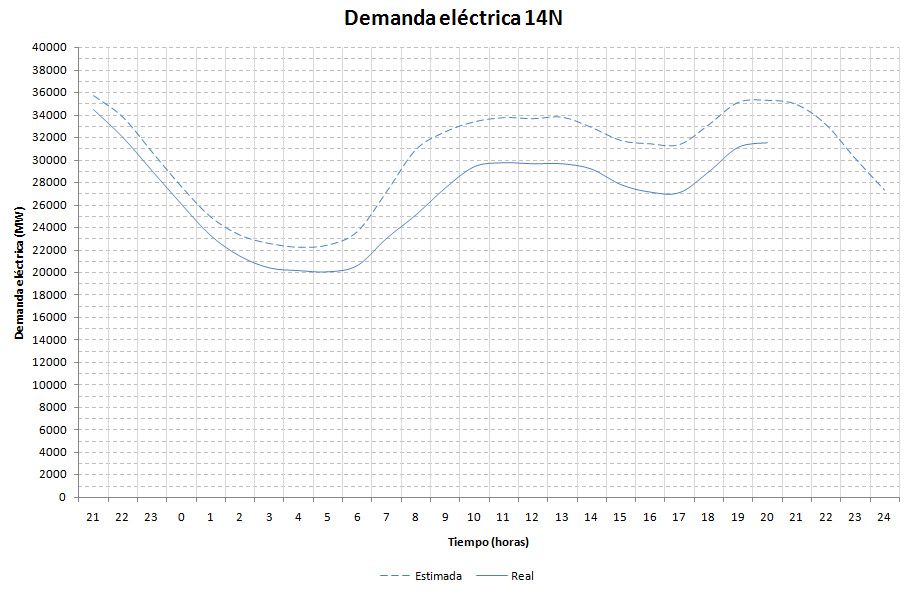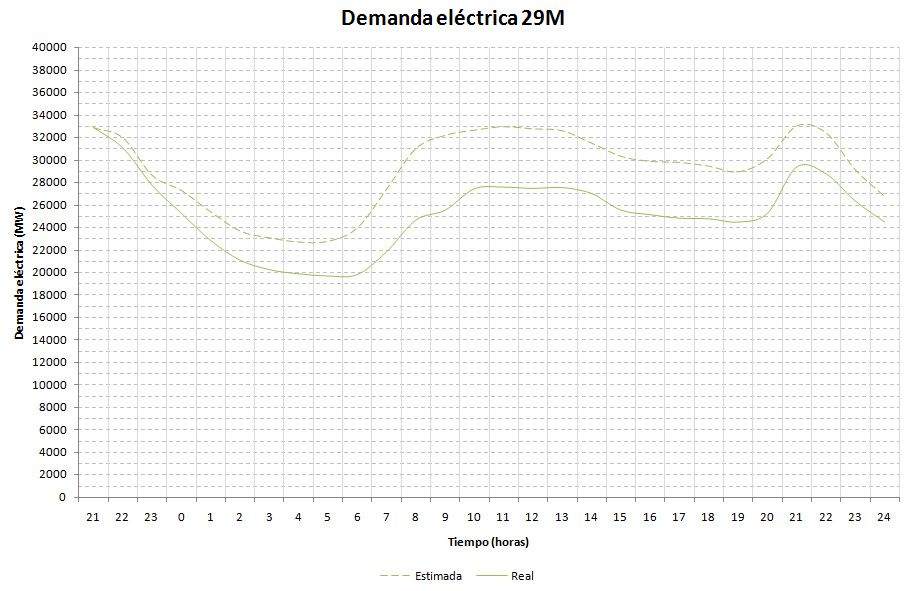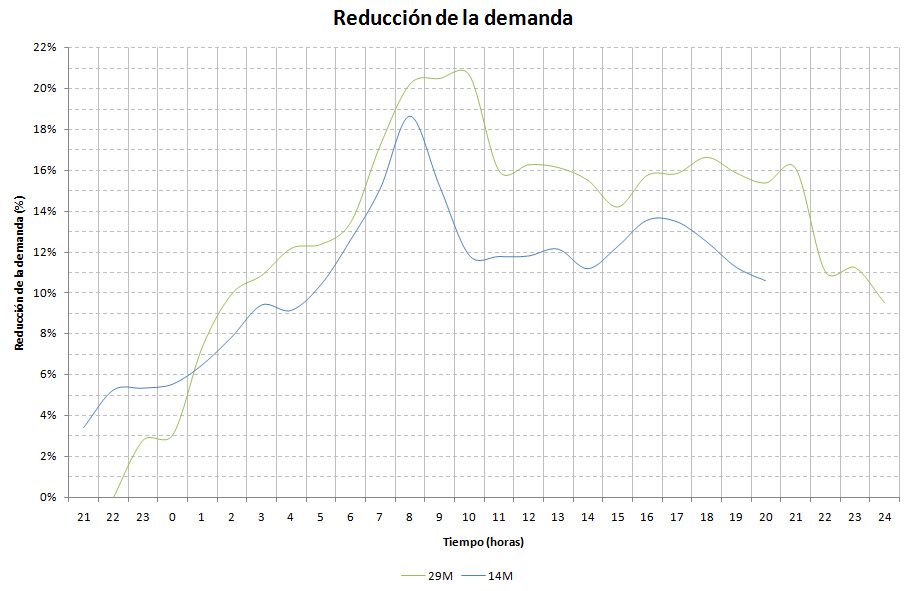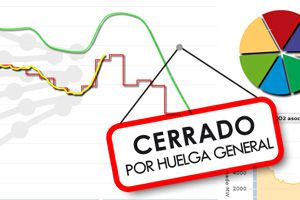Today is a strike day and, as usual, electric demand is on everyone’s lips as a parameter to estimate and compare the follow-up. And, as is also usual, the dance of figures has begun, where each interest group states the data as it suits them.
We are already accustomed to this dance. But, unlike other occasions, electrical consumption is objective data, and not debatable. In this post we will treat the data points as objectively as possible, so that everyone can draw their own conclusions.
Before getting into the data, it is necessary to make it clear that interpreting demand data is not as simple and straightforward as the media say. For those of you who want to delve into the subject, I leave some considerations below.
Electrical demand depends heavily on many factors, ranging from the most obvious, such as the season of the year or the day of the week, to others much less evident, such as the celebration of a World Cup final. All these factors have to be taken into account when making estimates, analysis, or comparisons between different time intervals.
- Logically, the schedule and the day of the week.
- Weather. Temperature and the seasons of the year have a strong influence on demand, as they involve the turning on and off of air conditioning (heating and air conditioning) installations. In general, cold days have higher electric demand.
- Lighting conditions, which vary throughout the year and, punctually, on cloudy days, with fog, etc. They imply an increase in demand due to the lighting systems being turned on, both public and private.
- Other specific events, such as holidays (Easter, etc.) or even something as seemingly innocuous, as we said, as television programming.
All these elements have their effect on demand and it is necessary to be especially careful when choosing the time interval in which to make comparisons and analysis.
On the other hand, when using demand as an estimator of human activity (or monitoring the strike) we must understand that it encompasses different consumption, and that it is not possible to distinguish between them without more data. These consumptions are:
- Consumption not associated with activity, that is, machinery that works autonomously, during part or all of the day. For example, traffic lights, pumping equipment, etc. A special case is public lighting (streetlights) because it represents a significant demand, and only intervenes during the nighttime period, and not even constantly throughout the year.
- Consumption associated with non-interruptible activity, that is, jobs that cannot be abandoned. For example, control centers, medical emergencies, minimum services.
- Industrial consumption, directly associated with productive activity. In turn, it can be continuous throughout the day (in large companies, with night shifts), or only during the daytime.
- Non-industrial consumption, associated with commercial sector activity, services, etc. Mainly in the daytime.
- Domestic consumption, associated with non-working human activities, such as getting up, turning on the light, and making coffee.
It is foreseeable that, in the event of a strike, part of the demand associated with industrial, commercial, or service activity will ‘convert’ into domestic consumption. At the same time, constant consumption (which does not depend on people) and part of the ‘non-interruptible’ work will be maintained. It is therefore necessary to compare the data both with a normal working day and with the nearest holiday.
Finally, and equally important, it is not necessarily true, a priori, that the follow-up in electrical demand is linearly related to the follow-up in the number of people. For example, a small workshop or store may have a high number of employees (20-30) and, due to its activity, a relatively small consumption. However, a factory can have a much higher consumption, due to the use of large machines and, precisely because of the existence of these large machines, an employee/demand ratio much lower than that of a smaller or less automated installation.
Therefore, the existence of a (for example) 10% reduction in energy does not imply a 10% reduction in the people working. It may be more or less, depending on the sectors that have had the most impact. In the absence of more data, it can be assumed that, on average, the relationship is fulfilled, but it must be taken into account that it is an estimate that is not necessarily true.
With that said, I hope to have made it clear that electrical demand is an estimator of industrial activity, just as the number of vehicle trips, or the volume of bank transactions can be. But being an indicator does not necessarily imply a direct and obvious relationship between demand and the follow-up of the strike, or that the comparison between different periods is immediate.
Once this is clarified, I will show the data, which have been obtained from the page https://demanda.ree.es/demanda.html, where the data is available for public access. The electric grid gentlemen have very intelligent statisticians who calculate the hourly demand forecast every day to prepare for the activation of the power plants. We will use these estimates against the actual consumption to determine the decrease in consumption.
First, I show you the graph of the hourly electric demand for the general strike of 14N. The estimated demand is the one that would correspond to normal operation without a strike, and the real demand is what has actually been consumed. (click on the images to enlarge)

Next, I show you the same graph of hourly demand for the general strike of 29M.

Finally, the following graph compares the reduction in demand, as a percentage of the estimated demand, for each hour, in both strikes.

Taking a period from 8 am to 6 pm as representative of the majority of the population, it is estimated that the average decrease in electric demand has been 13% for the 14N strike and 16% for the 29M.
Finally, I will say, as a curious fact, that although the follow-up of this strike has been somewhat lower, it has lasted longer. In the 29M strike, the demand started to deviate at 9:00 pm on the 28th and returned to normal at 4:00 am on the 30th. However, in the 14N strike, the deviation began at 6:00 pm on the 13th, and it is not expected to return to normal until 6:00 am on the 15th.
These are the cold and objective facts. What is your opinion? Has your perception of the follow-up been different? Do you think the data reflects reality? If you want to leave us a comment, you are invited.
